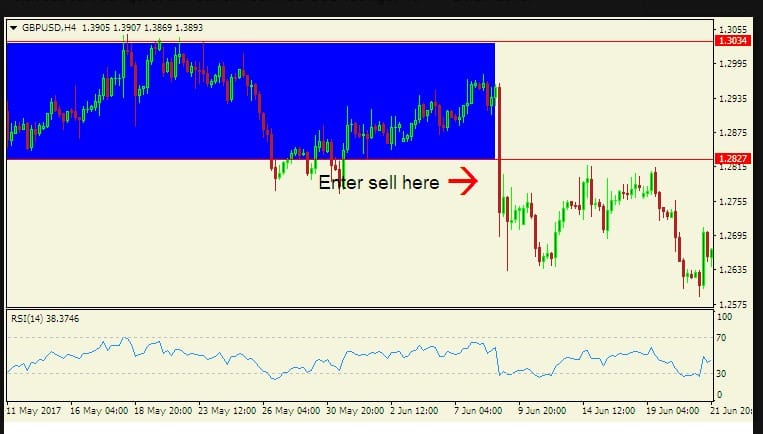Table of Contents
Toggle🔍 Which Type of Forex Analysis Suits You Best?
| Analysis Approach | Ideal For | Key Advantages |
|---|---|---|
| Technical Analysis | Intraday traders & scalpers | Rapid execution, chart-based decision making |
| Fundamental Analysis | Swing and long-term traders | Macro perspective, identifies underlying trends |
| Sentiment Analysis | Traders at all levels | Gauges market mood, great for contrarian plays |
📌 Explanation:
Technical Analysis is perfect for those who rely on real-time charts and patterns to make fast decisions in volatile markets.
Fundamental Analysis helps traders who focus on economic indicators and geopolitical news to spot long-term trends.
Sentiment Analysis is a great complementary method, helping traders understand crowd psychology and identify overbought or oversold conditions.
Forex analysis is essential for navigating the complexities of forex trading. By integrating technical, fundamental, and sentiment analysis into your strategy, you can significantly enhance both your decision-making and profitability. Instead of depending on just one method, combining all three provides a more complete and accurate view of the market.
To trade successfully, it’s important to understand how to merge these analytical approaches effectively. In this guide, we’ll explore each type of forex analysis and show you how to combine them—with practical examples, actionable recommendations, and valuable resources.
1. Understanding the Three Main Types of Forex Analysis
Technical Analysis: The Foundation of Market Timing

Technical analysis involves reading price charts, identifying trends, and using indicators like moving averages, support/resistance levels, RSI, MACD, or Fibonacci retracement.
- Key Tools: Candlestick patterns, trendlines, indicators (RSI, MACD, Moving Averages).
- Goal: Identify potential entry and exit points based on historical price data.
Example: Suppose EUR/USD is in an uptrend, and the RSI approaches the 70 level, suggesting an overbought condition. This could be a cue for a potential pullback or reversal.
Fundamental Analysis: Gauging the Bigger Picture
Fundamental analysis looks at economic indicators, interest rates, geopolitical developments, and financial news that influence a currency’s value.
- Key Indicators: GDP, CPI, interest rate decisions, employment reports, central bank speeches.
- Goal: Determine whether a currency is undervalued or overvalued based on macroeconomic data.
Example: If the U.S. releases stronger-than-expected non-farm payroll (NFP) data, the USD may strengthen against other currencies like EUR or JPY.
Sentiment Analysis: Reading the Market’s Mood
Sentiment analysis identifies the overall attitude of traders toward a currency pair. It often uses tools like the Commitment of Traders (COT) report or indicators such as the Fear & Greed Index.
- Key Indicators: COT reports, volume analysis, sentiment indexes.
- Goal: Understand market psychology and anticipate potential reversals during extreme sentiment.
Example: If 80% of retail traders are long on GBP/USD, but price fails to move up, it might signal an incoming reversal driven by institutional activity.
2. How to Combine All Three Types for Better Trading Decisions
The key to a holistic trading approach is aligning all three analyses to confirm a trade idea. Here’s a simple framework:
Step-by-step Example: AUD/USD Sell Setup
Technical Analysis:
- AUD/USD retraced to the 61.8% Fibonacci level on the 4H chart.
- RSI indicates an overbought condition (above 70).
Fundamental Analysis:
- RBA (Reserve Bank of Australia) Governor delivers a dovish speech, suggesting low interest rates will persist.
Sentiment Analysis:
- Retail traders are excessively bullish on AUD.
Conclusion: All three types align for a short trade. A sell position is placed, and the market begins to drop in line with the multi-dimensional analysis.
🔗 Want more examples like this? Read our latest article on Forex Forecasts: What You Need to Know
3. Recommendations for Forex Traders
- ✅ Start with the trend: Use technical analysis to identify trend direction.
- ✅ Validate with fundamentals: Confirm that economic conditions support your trade.
- ✅ Gauge sentiment extremes: Avoid entering at sentiment highs or lows unless trading reversals.
- ✅ Keep a trading journal: Record how each type of analysis influenced your trade.
- ✅ Backtest strategies: Combine methods and test their historical effectiveness.
For beginners, we highly recommend reading our foundational guide: Forex Basics for Beginners
4. Why Combining Analysis Improves Trading Success
Relying solely on one form of analysis is like trying to sit on a one-legged stool—it’s unstable. Each type brings a unique advantage:
- Technical tells you when to enter.
- Fundamental tells you why the market moves.
- Sentiment tells you how the crowd is positioned.
By aligning them, you improve your accuracy, timing, and risk management.
✅ New to the industry? Discover the difference between Forex Brokers vs Prop Firms and find the best fit for your trading journey.
Final Thoughts
Smart traders don’t pick sides—they integrate perspectives. Using technical, fundamental, and sentiment analysis together creates a solid trading framework that adapts to any market condition.
Remember, the more data points that support your trade, the more confident and consistent your results will be. Practice combining them, analyze your trades, and watch your trading edge sharpen over time.
📌 Keep learning, stay objective, and refine your strategy.
Ready to apply what you’ve learned? Explore our full range of guides at SmartFXGuide.com



